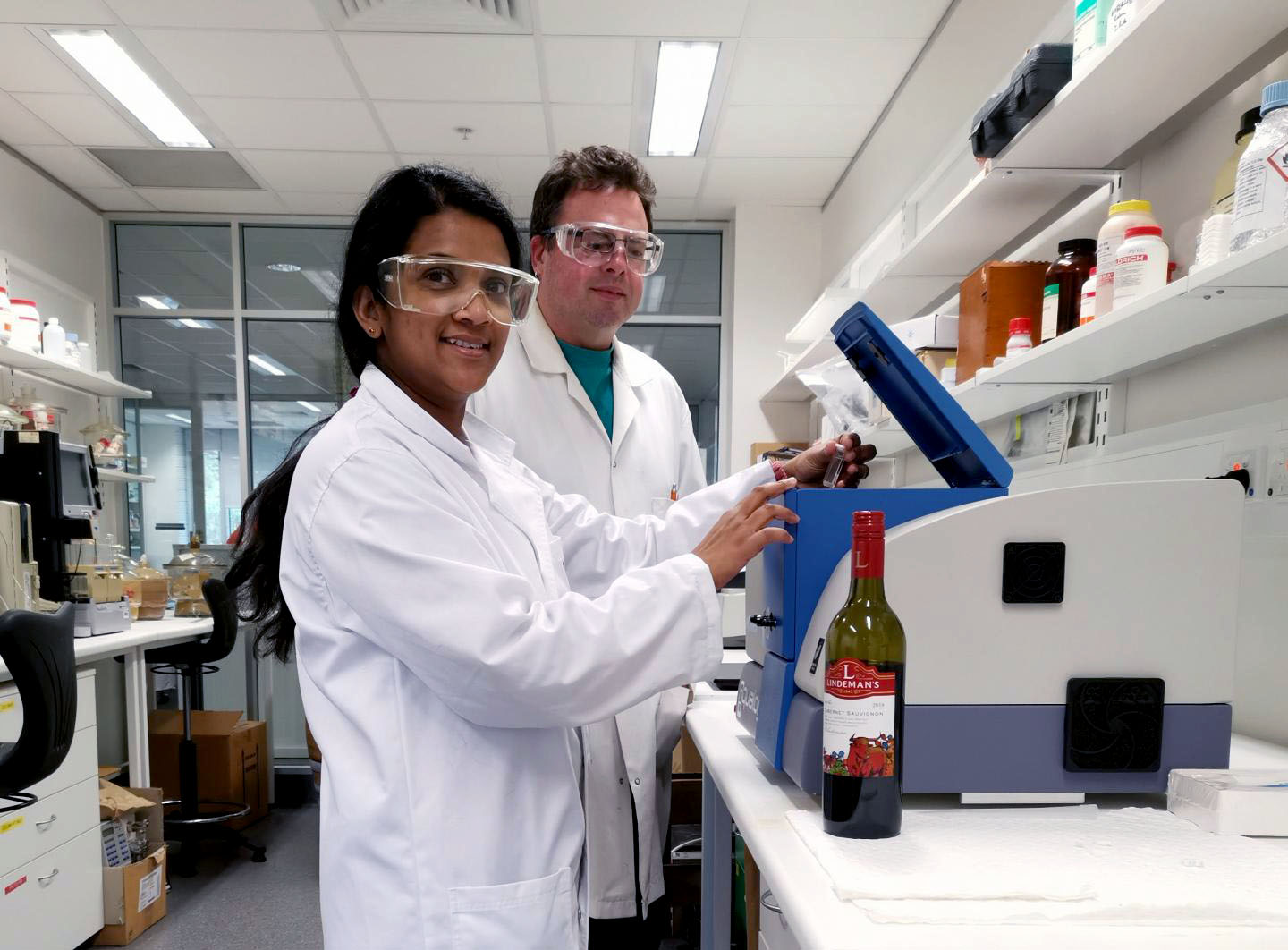This incident spurred the creation of a range of techniques for buyers to spot fraudulent wines; from print and inks analysis to libraries of authentic corks and stoppers, to more scientific methods such as elemental analysis. While these techniques have helped, wine fraud continues to be incredibly lucrative, with an estimated several hundred million dollars of fraud taking place within Australia alone. Now, researchers at the University of Adelaide have developed a new technique that could stop this illegal trade in its tracks.

PhD student Ruchira Ranaweera loads a wine sample into the Aqualog spectrofluorometer, with A/Prof. David Jeffery. Courtesy of University of Adelaide.
Wine contains a diverse array of molecules that come from the grapes themselves, the yeast and bacteria on the skins, the oak casks, and as a result of reactions that occur during storage. These combine to give each wine a unique cocktail of molecules that can be detected by a number of techniques. The team lead by A/Prof. David Jeffery and Ruchira Ranaweera compared an existing approach for authentication, which involves measuring elements in wine samples using ‘inductively coupled plasma-mass spectrometry’ (ICP-MS), with the more simple, rapid and cost-effective fluorescence spectroscopy technique, ‘absorbance and transmission excitation-emission matrix’ (A-TEEM). These techniques were then combined with machine learning in the data analysis phase.
The team tested Cabernet Sauvignon wines from Bordeaux, France, along with some from three Australian wine regions. The A-TEEM, combined with machine learning, identified the geographical origin of the wines with 100% accuracy. This new fluorescence-based technique gave more accurate results than the ICP-MS.
ICP-MS measurements were taken at our University of Adelaide facility, Adelaide Microscopy, with the expert assistance of microanalysis specialist Dr Sarah Gilbert.
“Other than coming up with a robust method for authenticity testing, we are hoping to use the chemical information obtained from fluorescence data to identify the molecules that are differentiating the wines from the different regions,” A/Prof. Jeffery says. “This may help with regional branding, by understanding how their wines’ characteristics are influenced by the region and how they differ from other regions.”
The research has been published in the journal Food Chemistry and was supported by Wine Australia and the Australian Government, the Waite Research Institute and industry partners through the ARC Training Centre for Innovative Wine Production.
Array
March 11, 2021